Daisy Kenyon
7 /10 1 Votes
Country United States | 6.8/10 IMDb Genre Drama, Romance Duration | |||||||||||||||||||||||||||||||||
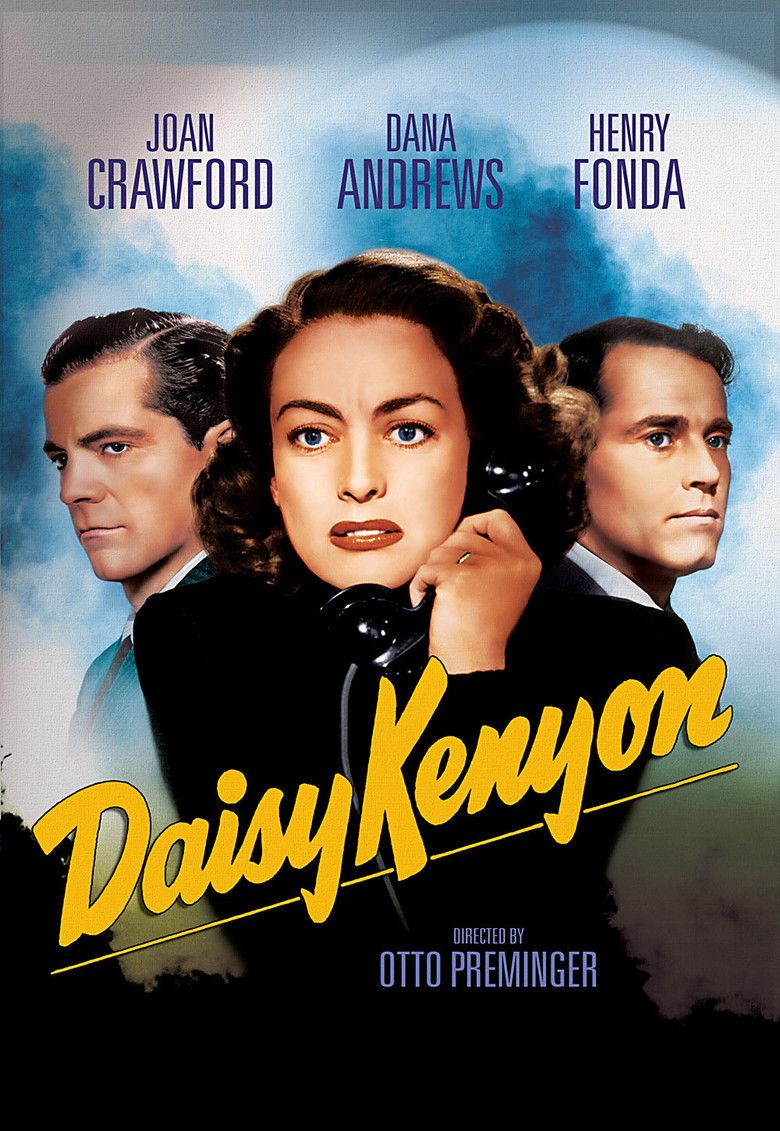 | ||||||||||||||||||||||||||||||||||
Release date December 25, 1947 (1947-12-25) (U.S.) Based on Daisy Kenyon (novel) Film series 20th Century Fox Film Noir Cast (Daisy Kenyon), (Dan O'Mara), (Peter Lapham), (Lucille O'Mara), (Mary Angelus), (Rosamund O'Mara) Similar movies Jaws of Steel , Below the Line , Under the Black Eagle , Find Your Man , My Dad , Downfall | ||||||||||||||||||||||||||||||||||
Daisy kenyon 1947 trailer
Daisy Kenyon is a 1947 American romantic-drama by 20th Century Fox, starring Joan Crawford, Henry Fonda, and Dana Andrews in a story about a post-World War II romantic triangle. The screenplay by David Hertz was based upon a 1945 novel of the same name by Elizabeth Janeway. The film was directed and produced by Otto Preminger. Having opened to restrained reception, Kenyon has seen reappraisal, and now enjoys a minor cult following for its realistic treatment of a typically melodramatic plot.
Contents
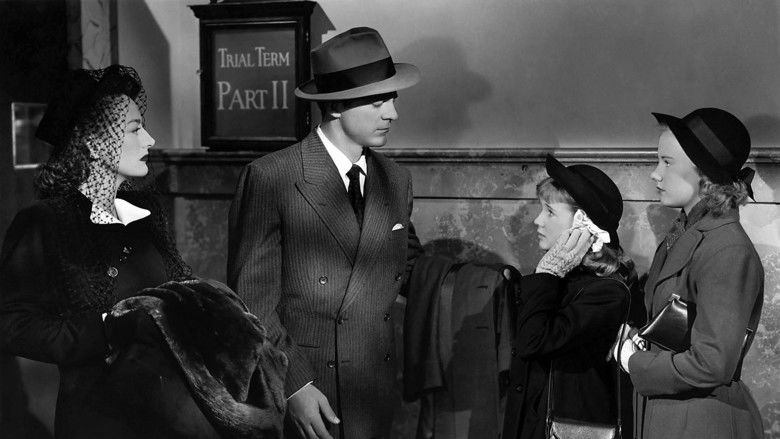
Lux radio theatre daisy kenyon
Plot

Daisy Kenyon (Joan Crawford) is a Manhattan commercial artist having an affair with an arrogant and overbearing but successful lawyer named Dan O'Mara (Dana Andrews), who is married and has two children. He breaks a date with Daisy one night and she goes out with a widowed war veteran named Peter Lapham (Henry Fonda).
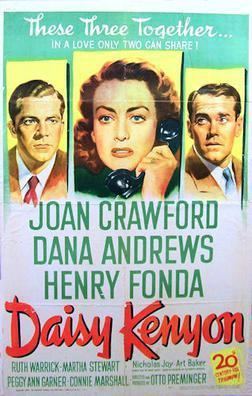
O'Mara and his wife Lucille (Ruth Warrick) fight constantly: about his job, the upbringing of their two daughters, about his cheating. That same night, Dan turns up at New York's Stork Club with his wife and older daughter where Daisy and Peter are waiting to be seated. Daisy and Peter leave immediately. At the end of the date, Peter announces that he loves Daisy, and then leaves. Peter stands her up for their next date, but later he comes by unannounced and proposes to Daisy. She realizes that he is still in love with his late wife.
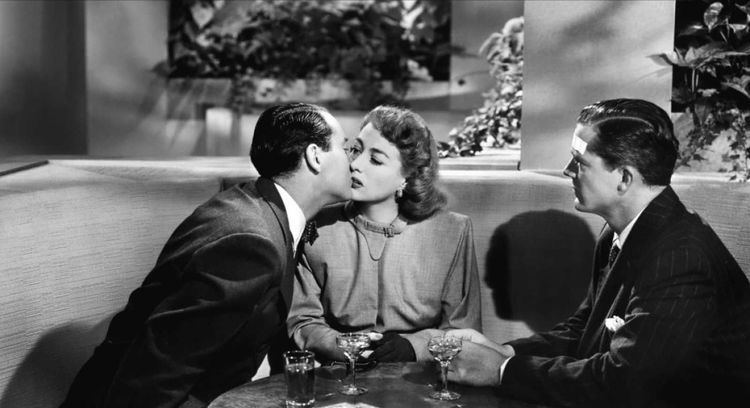
After a brief and hesitant courtship Daisy marries Peter, although she is still in love with Dan. Daisy supports Peter's post-war career. Peter is moody, sometimes quiet and withholding, sometimes wildly exuberant. Peter knows that Dan used to be in Daisy's life. Daisy feels like she's gotten over Dan. Dan's wife, finally fed up with his cheating, wants a divorce, using full custody of the children as leverage to hurt Dan.
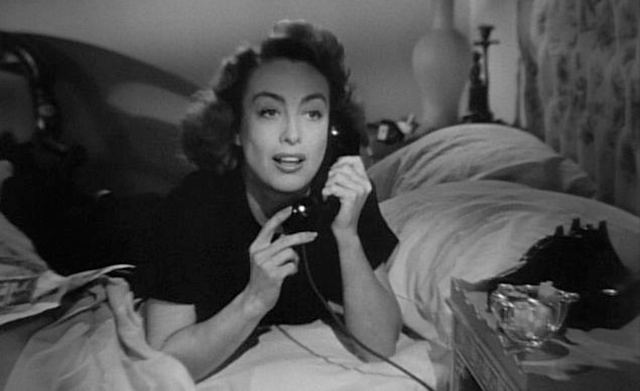
Dan asks Peter and Daisy to allow him to reveal the full details of his former relationship with Daisy during the divorce proceedings. Peter states that he won't stand in Daisy's way, that when they first met he needed her, but that he doesn't anymore. He leaves. The trial begins, but Dan can see how much it's hurting Daisy, so he stops the proceedings. He asks Peter to sign divorce papers, even though Daisy did not request them.

Daisy goes away to think. She gets into a car accident. Dan and Peter are waiting for her at the cottage. She asks Dan to leave. Daisy realizes she no longer loves Dan and remains with Peter.
Cast


Newspaper reporters Walter Winchell, Leonard Lyons, and Damon Runyon, along with actor John Garfield, make cameo appearances in the film.
Production
The rights to Elizabeth Janeway's novel were purchased by 20th Century Fox for $100,000 in 1945; Joan Crawford herself had intended to buy the rights for herself, but failed to bid before Fox. An unfinished first draft of the screenplay was first written in August 1945 by Margaret Buell Wilder and Ted Sills before Hertz was brought in to write a second draft. Ring Lardner Jr., who had written the script for Laura, was hired to revise Hertz's draft in 1947. The Motion Picture Production Code administrators, with whom Preminger often sparred, took issue with the screenplay's "lack of regard for the sanctity of marriage". The studio was advised to avoid referencing explicit sexual intercourse, and to emphasize the moral wrongness of the relationship between the characters of Daisy and Dan; the code administrators also suggested that the divorcing characters Dan and Lucille reunite at the end of the film. Preminger was also forced to work around the PCA's concerns over alcohol- characters pour alcoholic drinks in several scenes, but never drink them.
Gene Tierney, who had starred in Preminger's 1944 film Laura, and Jennifer Jones, who had been considered for Tierney's role in that picture, were both considered for the part of Daisy Kenyon in 1945 and 1946, respectively, before Crawford was allowed to be "borrowed" from her contract with Warner Bros. The casting of Crawford was somewhat problematic, as she was 42, while the character of Daisy as depicted in the novel is 32. A make-up artist and shadowy cinematography were employed to disguise Crawford's age. Andrews and Fonda were not fond of the script, but completed the film to fulfill their contracts.
Production of the film was completed without setback, two days ahead of schedule and only $100 over the set budget. Ruth Warrick stated that Preminger "carried himself like an army officer, and behaved like a general moving the troops." Warrick also commented on the amicable relationship of the director and his lead star, saying, "With Otto and Joan, we had two tyrants on the set, and that may have kept both of them in line." The only apparent problem on set was the maintenance of a temperature of 50 degrees to ease Crawford's hot flashes. According to Warrick, "she was always in tennis shorts and a thin blouse because she was so hot, while I had to wear a fur coat to keep warm. Otto said not one word about the temperature." Crawford presented Andrews and Fonda with long underwear as appeasement.
Reception
Reviews at its release were generally positive, if dismissive. Otto Preminger himself stated that he forgot he had made the film. Variety's review stated that the central "triangle, in which Dana Andrews and Henry Fonda fight it out for the love of Joan Crawford, is basically a shallow lending-library affair, but it's made to seem important by the magnetic trio's slick-smart backgrounds - plus, of course, excellent direction, sophisticated dialog, solid supporting cast and other flashy production values." T. M. P. in the New York Times noted, "Miss Crawford is, of course, an old hand at being an emotionally confused and frustrated woman, and she plays the role with easy competence." Otis L. Guernsey, Jr. in the New York Herald Tribune commented, "Preminger accomplishes no mean feat in guiding these people in and out among the interweavings of their own complexes, and he does wonders in varying the action of similar scenes."
Initial dismissal of Daisy Kenyon has given way to some critical reappraisal in recent years; it has earned a cult following, with some calling it a misunderstood masterpiece and one of Preminger's best films. Mike D'Angelo, giving the film a grade of 99 out of a possible 100 points, hailed Kenyon as "the most bluntly realistic romantic melodrama I've ever seen." Dan Callahan of Slant Magazine, awarding Kenyon three and a half stars out of four, called the film a "troubling and ambiguous portrayal of three real, unknowable characters (and actors) in constant flux", saying that the film "distilled [soap opera] to its real life essence, until what's left is nothing more than the ultimate mystery of art." Fernando Croce, giving the film four and a half stars out of five, called the film "a scrupulously cooled romance and a portrait of a postwar nation, but first and foremost... a fluid chart of thorny personal spaces brushing against each other." Independent filmmaker Dan Sallitt voted for it as one of his ten favorite films in a 2012 Sight & Sound poll.
Daisy Kenyon currently holds a 100% percentage rating on review aggregating website Rotten Tomatoes, with an average rating of 6.6/10, based on 5 reviews. Critics Roundup, a website that describes itself as "the first movie review aggregator to select reviews based on writing quality instead of popularity", also reports that 100% of 12 critics reviewed the film positively.
References
Daisy Kenyon WikipediaDaisy Kenyon IMDb Daisy Kenyon themoviedb.org
